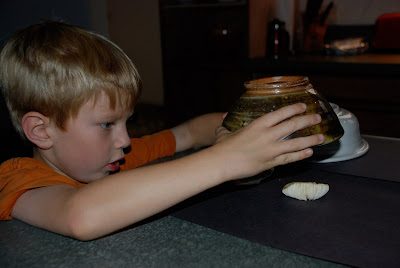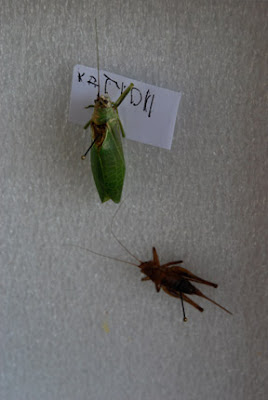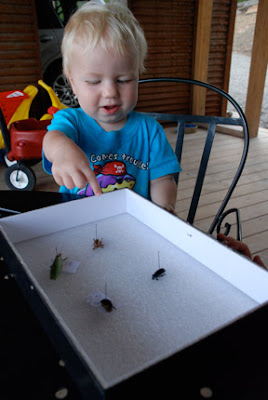Brown-Trout Acres Almanac
Natural happenings in the woods we call home.
Tuesday, September 7, 2010
Making Mushroom Prints

Mushrooms are arguably one of nature's most curious and fascinating life forms. Even my one-year-old takes notice, pointing them out as we walk through the woods. Existing in many different forms, some are bright and colorful, others are strange and stinky. Add to that the fact they can appear almost overnight, one can begin to appreciate these unworldly organisms.
- Construction paper (dark colors work the best)
- Scissors
- Bowls
- Hairspray or spray fixative (optional)
- Head outside (ideally a few hours after a rain shower).
- Collect mushrooms - try and find a "traditional" cap mushroom with gills underneath.
- Cut the mushroom stem at the base.
- Carefully place the mushroom, gill side down on a piece of construction paper.
- Cover the mushroom with a bowl and let it sit overnight.
- Remove the bowl and lift up the cap.
- Marvel at the beauty of your spore art!
- Let the paper dry, then seal it with hairspray or spray fixative. Spray far above the print so spores are not blown off the paper.



Wednesday, August 18, 2010
Mushroom Gallery
Thursday, August 12, 2010
Perseids Meteor Shower TONIGHT!
Get ready for a dazzling show of natural fireworks. Tonight marks the peak of the Perseids meteor shower, and scientists are gearing up for what is expected to be the most magnificent show of the year, peaking at possibly 50 or more meteors per hour! Tonight is an especially good night for viewing due to the waxing cresent moon setting early in the evening, leaving a dark sky for the show.
During meteor showers, like the one happening this evening, the meteors appear to originate from a single point in the sky called the radiant. This occurs because the showers are associated with disintegrated comets or comets still orbiting the Sun, leaving behind clumps of gravel and dust that spreads out along the original orbit of the comet. When one of these streams of particles enters the Earth’s atmosphere, the meteors appear to originate from a single point.
Tonight’s meteor shower is called Perseids, so named because meteors will radiate from a point in the constellation Perseus, the Hero. The Perseid meteor shower happens every August when Earth passes through a stream of particles left behind from Comet Swift-Tuttle. If you have no idea where Perseus is in the night sky, don’t worry! The meteors will appear in all parts of the sky.
Meteor Shower Viewing Tips
The best time for viewing is between midnight and dawn tonight (the morning of August 13th)
Find a dark sky (if it’s not dark where you are, come on out to our place!)
Set up your camping chair or blanket and enjoy the spectacular show with family and friends!
Tuesday, August 10, 2010
Wednesday, August 4, 2010
Max's Insect Collection




























